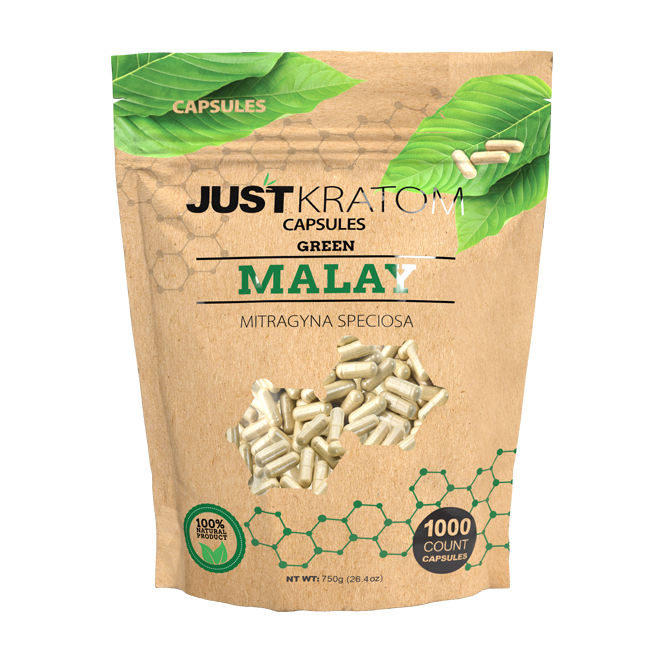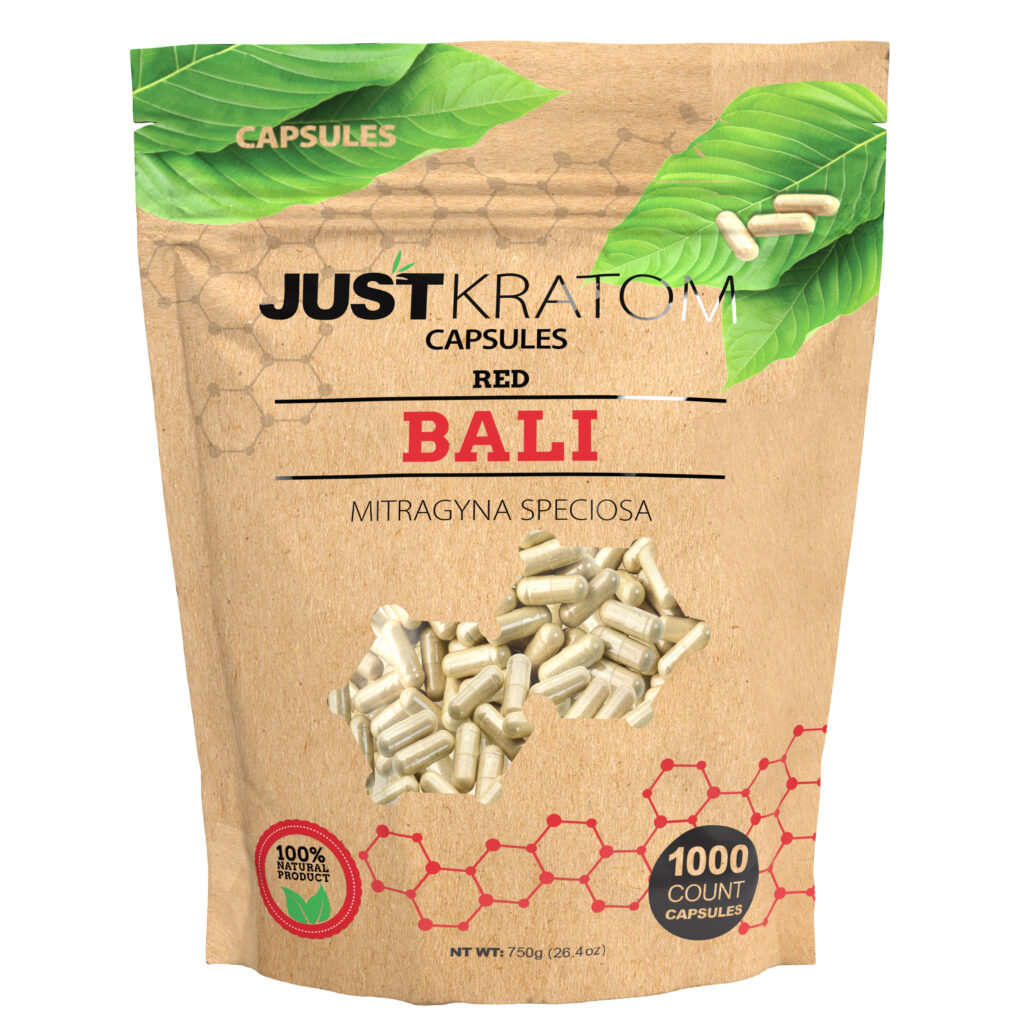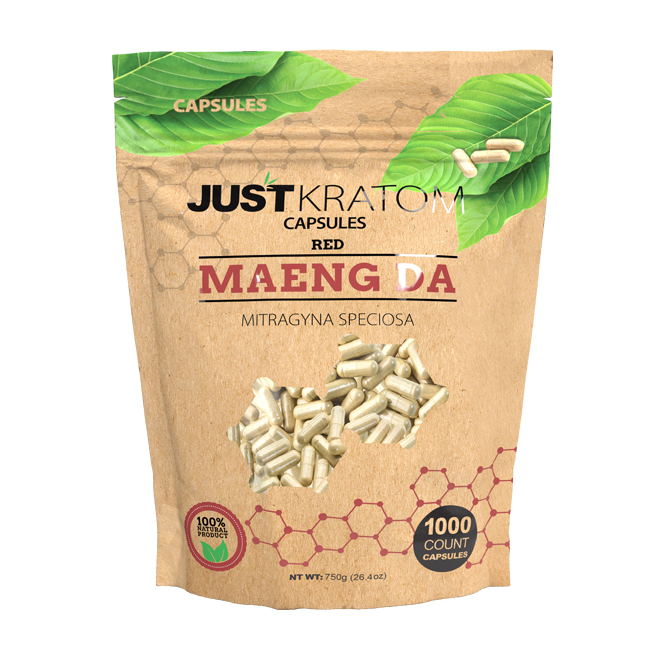Pharmacological Effects of Kratom
Kratom, a tropical evergreen tree native to Southeast Asia, has gained worldwide attention for its potential medicinal and recreational effects. Derived from the Mitragyna speciosa tree, kratom leaves contain alkaloids, notably mitragynine and 7-hydroxymitragynine, which are believed to be responsible for its pharmacological activity. These alkaloids interact with opioid receptors in the brain, producing a range of effects that vary depending on dosage.
Mechanism of Action
Kratom’s pharmacological effects stem from the interaction of its alkaloids, primarily mitragynine and 7-hydroxymitragynine, with opioid receptors in the central nervous system. These receptors are involved in modulating pain perception, mood regulation, and other physiological processes. Mitragynine acts as a partial agonist at mu-opioid receptors, producing effects similar to opioids but with less potency. It also binds to kappa-opioid receptors, which may contribute to its analgesic and euphoric properties.
7-hydroxymitragynine, another prominent alkaloid, exhibits a more complex profile. While it also binds to mu-opioid receptors, it also interacts with dopamine receptors, potentially contributing to kratom’s stimulant-like effects at lower doses. As dosage increases, the analgesic and sedative effects become more pronounced.
Analgesic Properties
Kratom’s analgesic properties are primarily attributed to the interaction of its alkaloids, particularly mitragynine, with opioid receptors in the central nervous system. Mitragynine acts as a partial agonist at mu-opioid receptors, mimicking the pain-relieving effects of opioids but with less potency. This binding contributes to kratom’s ability to alleviate pain, especially mild to moderate pain.
The analgesic effect of kratom appears to be dose-dependent. Lower doses may produce a more stimulating effect, while higher doses lead to increased sedation and stronger pain relief. It is important to note that kratom’s analgesic effects are not as potent or long-lasting as those of conventional opioid medications.
Stimulant and Euphoric Effects
Kratom’s alkaloids interact with opioid receptors in the brain, leading to both stimulant and euphoric effects. Mitragynine, a primary alkaloid, acts as a partial agonist at mu-opioid receptors, producing pain relief similar to opioids but with less intensity. This binding also contributes to kratom’s euphoric effects.
At lower doses, 7-hydroxymitragynine, another key alkaloid, binds to dopamine receptors in addition to opioid receptors. This interaction is thought to contribute to kratom’s stimulant-like effects, such as increased energy and alertness.
As dosage increases, the influence of opioid receptor activation becomes more dominant, leading to increased sedation and enhanced pain relief. The balance between stimulant and sedative effects can vary depending on individual factors and the specific dose consumed.
Sedative Effects
Kratom’s sedative effects are primarily attributed to the interaction of its alkaloids, particularly mitragynine, with opioid receptors in the central nervous system. As dosage increases, the analgesic and sedative properties become more pronounced.
Mitragynine acts as a partial agonist at mu-opioid receptors, producing effects similar to opioids but with less potency. This binding contributes to kratom’s ability to induce relaxation and drowsiness.
The sedative effect of kratom is dose-dependent, meaning that higher doses generally lead to more pronounced sedation.

Chemical Composition of Kratom Capsules
Kratom capsules encapsulate a blend of alkaloids derived from the Mitragyna speciosa tree. These alkaloids, primarily mitragynine and 7-hydroxymitragynine, are responsible for kratom’s diverse pharmacological effects.
Active Compounds: Mitragynine and 7-hydroxymitragynine
Kratom capsules contain a mixture of alkaloids extracted from the leaves of the Mitragyna speciosa tree. The two most significant alkaloids in kratom capsules are mitragynine and 7-hydroxymitragynine, which are responsible for the plant’s pharmacological effects.
Mitragynine acts as a partial agonist at mu-opioid receptors, producing effects similar to opioids but with less potency. It also binds to kappa-opioid receptors, which may contribute to kratom’s analgesic and euphoric properties.
7-hydroxymitragynine exhibits a more complex profile. While it also binds to mu-opioid receptors, it also interacts with dopamine receptors, potentially contributing to kratom’s stimulant-like effects at lower doses. As dosage increases, the analgesic and sedative effects become more pronounced.
Other Alkaloids Present in Kratom
Kratom capsules contain a mixture of alkaloids extracted from the leaves of the Mitragyna speciosa tree. The two most significant alkaloids in kratom capsules are mitragynine and 7-hydroxymitragynine, which are responsible for the plant’s pharmacological effects.
Besides mitragynine and 7-hydroxymitragynine, other alkaloids present in kratom include pseudoindoxyl, speciogynine, corynantheine, and paynantheine. These alkaloids contribute to the complex pharmacological profile of kratom and may play roles in its various effects.
Absorption, Distribution, Metabolism, and Excretion (ADME)
Understanding how a substance interacts with the body is crucial when exploring its potential benefits and risks. This process, known as ADME (Absorption, Distribution, Metabolism, and Excretion), describes the journey of a compound from ingestion to elimination. For kratom capsules, this journey begins with the absorption of alkaloids through the digestive system, followed by their distribution throughout the body via the bloodstream. These alkaloids then undergo metabolism, primarily in the liver, where they are chemically transformed into metabolites. Finally, the metabolites are excreted from the body, primarily through urine and feces.
Route of Administration and Absorption
ADME (Absorption, Distribution, Metabolism, and Excretion) is a fundamental process that elucidates how substances, including kratom alkaloids, interact with the human body.
Absorption refers to the process by which kratom alkaloids are taken up from the gastrointestinal tract into the bloodstream. Oral administration of kratom capsules allows for absorption primarily in the small intestine.

Once absorbed, kratom alkaloids are distributed throughout the body via the circulatory system, reaching various tissues and organs, including the brain.
The liver plays a crucial role in metabolizing kratom alkaloids, transforming them into metabolites. This metabolic process alters their chemical structure and influences their activity and duration of action.
Finally, the metabolites are excreted from the body, primarily through urine and feces. The kidneys filter the metabolites from the bloodstream and eliminate them in urine, while the liver contributes to their excretion through bile, which is ultimately eliminated in feces.

The route of administration significantly influences the rate and extent of absorption. Oral ingestion, as in kratom capsules, results in relatively slow absorption due to the time required for digestion and transit through the gastrointestinal tract.
Distribution in the Body
ADME (Absorption, Distribution, Metabolism, and Excretion) describes the journey a substance takes from entry into the body until its elimination. For kratom capsules, this process begins with absorption of alkaloids through the digestive system, followed by distribution throughout the body via the bloodstream.
Once absorbed, kratom alkaloids are distributed to various tissues and organs, including the brain, via the circulatory system. The liver plays a key role in metabolizing these alkaloids, transforming them into metabolites that have different properties than the original alkaloids. Finally, the metabolites are excreted from the body primarily through urine and feces.
The route of administration affects how quickly and efficiently a substance is absorbed. Oral ingestion, as with kratom capsules, involves absorption in the small intestine, leading to relatively slow entry into the bloodstream compared to other routes like intravenous injection.
Metabolism by the Liver
Kratom’s journey through the body can be understood through the ADME process: Absorption, Distribution, Metabolism, and Excretion. After ingestion of kratom capsules, the alkaloids are absorbed from the digestive system into the bloodstream. They then circulate throughout the body, reaching various tissues and organs, including the brain.
The liver plays a central role in metabolizing these alkaloids, converting them into metabolites with altered properties. These metabolites influence how long kratom’s effects last and their overall impact on the body.
Finally, the body eliminates these metabolites through urine and feces.
Excretion via Urine and Feces
Understanding how a substance interacts with the body is crucial when exploring its potential benefits and risks. This process, known as ADME (Absorption, Distribution, Metabolism, and Excretion), describes the journey of a compound from ingestion to elimination.
For kratom capsules, this journey begins with the absorption of alkaloids through the digestive system, followed by their distribution throughout the body via the bloodstream. These alkaloids then undergo metabolism, primarily in the liver, where they are chemically transformed into metabolites. Finally, the metabolites are excreted from the body, primarily through urine and feces.
Excretion is the final stage of ADME, involving the removal of kratom metabolites from the body. The kidneys play a key role in this process by filtering the metabolites from the bloodstream and excreting them in urine. The liver also contributes to excretion by processing metabolites through bile, which is eventually eliminated in feces.
The route of administration significantly influences the rate and extent of absorption. Oral ingestion, as in kratom capsules, allows for absorption primarily in the small intestine. This process can take some time, as the capsules must first dissolve and release the alkaloids before they can be absorbed.
Potential Side Effects and Risks
While kratom shows potential benefits, it is essential to be aware of potential side effects and risks associated with its use. These can include nausea, constipation, dizziness, itching, and dry mouth. In higher doses or with prolonged use, kratom may lead to more serious issues such as liver damage, dependence, withdrawal symptoms, and interactions with other medications.
Gastrointestinal Issues
Gastrointestinal issues are a common side effect of kratom consumption. These can range from mild discomfort to more serious problems. Nausea, vomiting, diarrhea, constipation, and stomach pain are all possible effects, often associated with higher doses or individual sensitivity.
It’s important to note that these gastrointestinal issues can vary in severity and frequency from person to person. Some individuals may experience minimal discomfort, while others may have more pronounced symptoms.
If you are experiencing persistent or severe gastrointestinal issues after using kratom, it is advisable to discontinue use and consult a healthcare professional.
Cardiovascular Effects
Kratom’s impact on the cardiovascular system is a subject of ongoing research and debate. While some studies suggest potential benefits, such as lowering blood pressure in specific cases, there are also concerns regarding its effects on heart rate and rhythm.
- Potential for Increased Heart Rate: Kratom’s stimulation properties may lead to increased heart rate, which can be a concern for individuals with pre-existing cardiovascular conditions.
- Risk of Arrhythmias: Some research indicates that kratom alkaloids could interfere with normal heart rhythm, potentially increasing the risk of arrhythmias (irregular heartbeat) in susceptible individuals.
- Blood Pressure Effects: Studies have shown mixed results regarding kratom’s impact on blood pressure. While some reports suggest a potential for lowering blood pressure, others indicate possible increases, particularly at higher doses.
Neurological Side Effects
Potential neurological side effects associated with kratom use include dizziness, headache, tremors, and altered perception (e.g., changes in vision or auditory experiences). These effects are thought to be primarily linked to kratom’s interaction with opioid receptors in the brain, which can influence neurotransmitters involved in motor control, sensory processing, and mood regulation.
Long-term or excessive use of kratom has been associated with a potential for neurological damage. Although research is ongoing, there are concerns regarding its possible impact on cognitive function, memory, and overall brain health.
It’s important to note that individual responses to kratom can vary greatly depending on factors such as dosage, frequency of use, individual metabolism, and pre-existing medical conditions.
Addiction and Withdrawal Symptoms
Kratom has the potential for a range of side effects. Gastrointestinal issues like nausea, vomiting, diarrhea, constipation, and stomach pain are common. Cardiovascular effects could include increased heart rate, arrhythmias (irregular heartbeat), and alterations in blood pressure.
Neurological side effects may manifest as dizziness, headaches, tremors, and altered perception.
Long-term or excessive kratom use raises concerns about potential liver damage, dependence, withdrawal symptoms, and interactions with other medications.
Addiction to kratom is a possibility, particularly with prolonged and frequent use. Withdrawal symptoms can occur when someone abruptly stops using kratom after becoming dependent. These symptoms may include:
* Agitation
* Anxiety
* Insomnia
* Muscle aches
* Nausea
* Sweating
* Tremors
It’s important to approach kratom with caution and be aware of the potential risks involved. Seeking guidance from a healthcare professional is advisable before using kratom, especially if you have any pre-existing medical conditions or are taking other medications.
Interactions with Other Substances
Understanding how a substance interacts with the body is crucial when exploring its potential benefits and risks. This process, known as ADME (Absorption, Distribution, Metabolism, and Excretion), describes the journey of a compound from ingestion to elimination. For kratom capsules, this journey begins with the absorption of alkaloids through the digestive system, followed by their distribution throughout the body via the bloodstream. These alkaloids then undergo metabolism, primarily in the liver, where they are chemically transformed into metabolites. Finally, the metabolites are excreted from the body, primarily through urine and feces.
Drug-Drug Interactions (e.g., opioids, antidepressants)
Kratom’s potential for drug interactions is a significant concern due to its interaction with opioid receptors. This can lead to complications when combined with other medications, particularly those that also affect the central nervous system.
Opioid Medications: Combining kratom with opioids (prescription painkillers, heroin) can be extremely dangerous. Both substances act on opioid receptors, potentially leading to respiratory depression, overdose, and even death. This interaction is highly unpredictable and carries a severe risk.
Antidepressants: Kratom may interact with certain antidepressants, especially those that also affect serotonin levels in the brain. These interactions can lead to serotonin syndrome, a potentially life-threatening condition characterized by symptoms like agitation, confusion, rapid heart rate, and muscle rigidity.
Central Nervous System Depressants (e.g., alcohol, benzodiazepines): Mixing kratom with alcohol or drugs that depress the central nervous system can increase the risk of sedation, respiratory depression, and other adverse effects. These combinations should be avoided.
It’s crucial to consult a healthcare professional before using kratom, especially if you are taking any medications. They can assess potential interactions and advise on safe use or alternative options.
Herb-Drug Interactions**
Kratom can interact with various substances, potentially leading to unpredictable and harmful effects. It is particularly important to be cautious when combining kratom with:
* **Opioid Medications:** Combining kratom with opioids like prescription painkillers or heroin is extremely dangerous. Both substances affect opioid receptors, increasing the risk of respiratory depression, overdose, and even death.
* **Antidepressants:** Kratom may interact with certain antidepressants, especially those that affect serotonin levels. This interaction can lead to serotonin syndrome, a potentially life-threatening condition characterized by symptoms like agitation, confusion, rapid heart rate, and muscle rigidity.
* **Central Nervous System Depressants:** Mixing kratom with alcohol or drugs that depress the central nervous system (e.g., benzodiazepines) can enhance sedation, respiratory depression, and other adverse effects.
Always consult a healthcare professional before using kratom, especially if you are taking any medications to minimize the risk of harmful interactions.
Shop Kratom capsules for pain relief
- What Are The Best CBD Infused Gummies For Daily Stress - November 11, 2025
- Uneven Skin Texture Treatment In Hersham, Surrey - November 9, 2025
- The Smoothest THC Infused Sodas Ever - November 6, 2025

